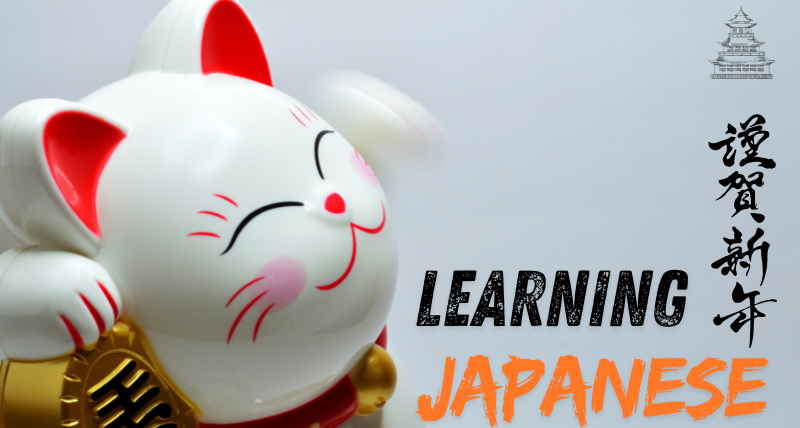Introduction:
How often have you wanted to watch Japanese animation without subtitles or even order an authentic bowl of ramen made in Japan? The available resources for learning the Japanese language have never been more plentiful, and it has become the easiest thing to learn.
Why Apps Are Essential:
The Japanese language has a variety of characters and unique grammatical rules. It is spoken through a Western language comprising primitive new-world language constructs that can neither be verbalized nor formed. As such, language learning apps are responsible for their consistent form, thus eliminating their responsibility. They also make lessons engaging enough that learners are rewarded for each session
This article will teach you some useful applications for learning the Japanese language while analyzing some of its core features, which can help you learn the language faster
Learning Japanese through apps such as Duolingo is the biggest reason: it is a complete revolution of the radical ‘Toki Pona’ language.
Benefits Of Language Apps:
With less capital investment and the ease of logging onto a language learning app, language learning opportunities naturally redefined, but with natural expansion, the apps allow for interactive practices and easy strokes of the button to learn how to read, speak, and write. When it comes to learning languages, the way most of us learn languages, they usually don’t provide interaction and gamification, speech recognition, and all that sort of thing to help you get immersed into a language.
How Apps Solve Common Challenges:
The Japanese language learners must learn these kanji, hiragana and katakana vocabulary alongside speaking and listening practice.
This application incorporates reading comprehension, articulation in a step-by-step fashion, and writing skills to address all these elements effectively.
For instance:
The spaced repetition technique is a research-backed, effective strategy for memorizing kanji. It is commonly used in an app.
2024 Top Japanese Language Apps

1. Duolingo
What do they offer?
Structured lessons, Immersive digital experience, syllabus-based studies.
What are the ‘good things’?
User friendly, very exciting and good for newbies.
So, what are the limitations?
Tackling complex structures and detailed descriptions spasmodically.
Audience Targeted:
For novice learners and fun.
Cost:
Premium, with ads.
What the customer has to say:
“I really like the idea that you can study Japanese for 10 minutes before or on the way on the bus.”
2. LingoDeer
What do they offer?
Grammar, two alphabets, and three Chinese characters – target deep lessons.
What are the good things?
Authentic content with excellent information.
So, what are the limitations?
Content on an advanced level is very little in nature.
Audience Targeted:
For novice and average-level learners hooked on grammatical and cultural content.
Cost:
Also available on trial version on a monthly basis.
Experience:
“Other applications could not give me the Japanese sentence structure well enough to grab. But LingoDeer was.”
3. HelloTalk
What do they offer?
Timeless guidance through Japanese natives and culture exposure.
But what are the good things?
They are very engaging, which will integrate one with the native speakers.
Cons:
It’s not too formal with too much structure for a lecture, but it’s more meaningful for conversations.
Best For:
better for intermediate learners who would like to improve their speaking skills.
Pricing:
Premium modes are costless, though.
Testimonial:
“I love to talk to locals and hear about Japanese culture.”
4. Anki
Features:
Repetitions were adjusted, and flashcards were spread.
Pros:
Fits great in the 3×3 fluency grid for remembering vocab and kanji.
Cons:
It will look quite simple, less appealing, and unengaging.
Best For:
It is very good for intermediate to advanced learners who want to study kanji.
Pricing:
Yes, there is a free version for PC and a paid version for mobile devices.
Experience:
“I hate kanji, and Anki’s spaced repetition system has absolutely changed the game for me in retention of kanji.”
5. Pimsleur
Features:
Audio lessons that help to promote conversation and pronunciation.
Pros:
It helps when travelling, mainly speaking and listening.
Cons:
Not much in reading or writing.
Best For:
People who want to learn or understand English in just a short amount of time.
Pricing:
Requires a subscription.
Testimonial:
“I like Pimsleur’s audio lessons best because I listen to them on my way to and from work.”
Tips for Selecting the Correct Application
User Experience:
Whether you prefer games, conversational or like a class, choose applications that fit your style of learning.
Compatibility:
It should be loaded across all devices you want to use it on, Android, iOS, etc.
Budget:
Consider whether you can afford additional features or if you will be okay with the free version.
Specific goals:
For example, craning, aiming to argue surplus, or speaking.
Note that:
Many applications offer a trial period for free. So if there is a free trial available with an app to test out, you may try it to find the interface and mode that fits you best
Most people tend to make the following mistakes when using language-learning apps…
Pitfall:
Dependence on a single application for all stages of learning the language.
Solution:
Using the application, the practice has to involve looking at textbooks or flashcards or talking the language.
Pitfall:
Principles that do not allow pronunciation.
Solution:
Apps with voice recognition to practice your speaking talent and recordings of native speakers to listen to.
Pitfall:
Recent notable applications have been picked without considering what goals or objectives are specific to an individual.
Solution:
The application mainly serves for the things you want to target, such as grammar, kanji, or the ability to speak a certain language.
Example:
But Duolingo was the only app I had ever considered depending on for a year. This app, however, did have its challenges with Kanji. When I switched to Anki and then LingoDeer, I noticed that I recalled kanji more often than before.
Most Frequently Asked Questions About The Best Apps For Learning Japanese-
1. What app out of 1000 or more is the best for first-timers in learning Japanese?
I would suggest Duolingo and LingoDeer for beginners, as they are very well done and easy to understand.
2. Is it possible to learn Japanese without using paid resources?
Free resources can be a good notion for those who are beginners, but free isn’t enough for the more advanced levels, and it’s always recommended that you use the premium version in addition to other resources.
3. Can one use the application to speak Japanese?
However, apps are a must to help you build a strong foundation, and a whole lot of practice, in reality, is practicing, which is needed to gain fluency.
4. What app should I use to get started learning Kanji?
For reasons related to kanji & spaced repetition: KanjisenseiSpecial or WaniKani would be among the best.
5. What is the best application for speaking and understanding Japanese?
A number of us at work from a language learning standpoint are currently relearning Japanese, so this post will focus specifically on apps for learning Japanese, whether that is for initial study to pick up basics or to be used as a second language.
Related Questions:
Which app should I use to study Japanese?
Which app should I use to just study Japanese?
Pimsleur and HelloTalk have speech and pronunciation practice, and WaniKani is used for writing exercises.
Conclusion:
Recap: Now, these tools exist to teach Japanese via fun applications that can be customized to accommodate different learners and levels.** All of the apps analyzed have something useful for learning the language.
Encouragement: Try one or more of these apps to get mixed up and start learning **.
Call-to-action: If you could drop the app that’s the best for you in the comments (or if you have suggestions in the comments either), that works well for other people, too!
